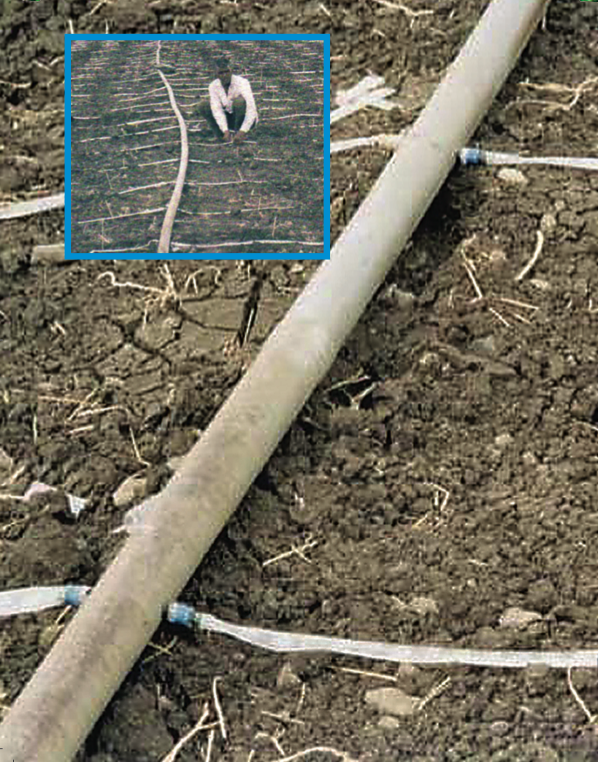Drip Irrigation - Pepsi and Nica
| |
Drip irrigation reduces water consumption but conventional drip technology is "high-tech" and expensive. To make drip irrigation affordable for small farmers, the Chapin bucket or IDE bucket and drum kits were developed and are now being promoted in many countries. A bucket kit costing US$ 5 can irrigate 25 m2 and a drum kit five times as much. Based on this principle, farmers in India started to make their own drip system, made of plastic hose that is normally used to package ice-lollies. Hoses can only be used for one growing season (generating plastic waste) but investment costs are so low that it is not a risk for poor families to invest in it. This technology now more or less promotes itself.
Easy drip irrigation
An improvement of Pepsi drip is the so-called Easy drip that consists of sun resistant lay-flat hoses and micro tubes that have a lifetime of 1-2 years. This option is being developed by IDE and applied in Asia. Practica foundation is testing different options in Nicaragua, Tanzania, Zambia and Ghana.
History and social context
Suitable conditions
The pepsi drip has a capacity of 0.1 - 2 ha
| Advantages | Disadvantages/limitations |
|---|---|
| - Reduces water consumption. |
- Hoses have a short lifetime (generating plastic waste). |
Technical specification
Operation
Maintenance
Manufacturing
Suppliers
Cost
Cost/ha: Pepsi drip: US$ 60 (plastic hose only). Easy drip: US$ 200 400.
Country experiences
Location: West Africa.
Manuals
Movies
External Links
www.cgiar.org/iwmi www.ideorg.org www.practicafoundation.nl
References

|

